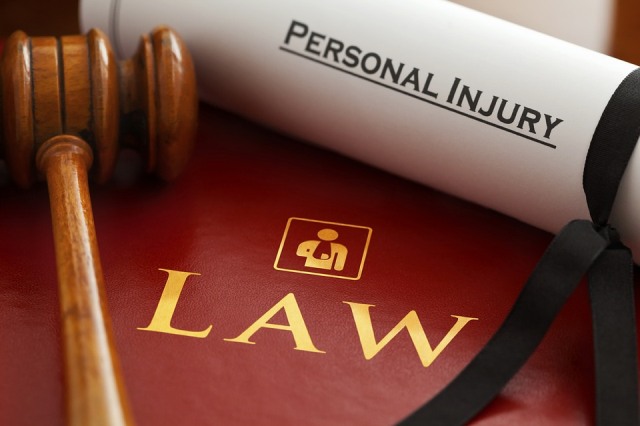Medical malpractice occurs when a health professional fails to follow established standard procedures and causes injury or death to the patient. The majority of malpractice claims involve medical errors, the most common of them are:
- Misdiagnosis of an illness, failure to diagnose or delay of a diagnosis.
- Giving the wrong drug
- Giving two or more drugs that interact unfavorably or cause poisonous metabolic byproducts
- Retained surgical instruments (for example, a surgical sponge) inside the patient after surgery
- Using race as a diagnosis, not a factor
- Incorrect record-keeping
What is Medical Malpractice?
Medical malpractice is professional negligence by act or omission by a health care provider in which care provided deviates from accepted standards of practice in the medical community and causes injury or death to the patient, with most cases involving medical error. Medical malpractice occurs when a health professional fails to follow established standard procedures. Nursing home abuse, failure to follow proper diagnostic procedures, misdiagnosing, prescription errors, surgical errors, birth injuries and hospital or nursing negligence, and lower tier health care provider negligence, e.g. family doctors, mid wives, physician’s assistants, medical assistants are common areas in which medical malpractice can occur.
Medical professionals may obtain professional liability insurances to offset the risk and costs of lawsuits based on medical malpractice. Each year, Ontario physicians pay fees to medical liability protection providers for professional liability protection. The Ministry of Health and Long-Term Care Medical Liability Protection Reimbursement Program provides a partial reimbursement to physicians who are eligible to benefit from the Program. Physicians have the option to become members of the Canadian Medical Protective Association, or to obtain protection from other providers.
Medical error
The majority of malpractice claims involve medical error. The most common errors are:
- Misdiagnosis of an illness, failure to diagnose or delay of a diagnosis. This type of error could be a direct mistake of a doctor or caused when the doctor is acting on incorrect information supplied by some other person.
- Giving the wrong drug (wrong patient, wrong chemical, wrong dose, wrong time, wrong route)
- Giving two or more drugs that interact unfavorably or cause poisonous metabolic byproducts
- Wrong-site surgery, such as amputating the wrong limb
- Retained surgical instruments. In particular, gossypiboma, resulting from a surgical sponge being left behind inside the patient after surgery
- Patients’ implementation of drugs and treatments
- Using race as a diagnosis, not a factor
- Transplanting organs of the wrong blood type
- Incorrect record-keeping
A 2006 study published in the New England Journal of Medicine concluded that claims without evidence of error “are not uncommon, but most (72%) are denied compensation. The vast majority of expenditures (54%) go toward litigation over errors and payment of them. The overhead costs of malpractice litigation are exorbitant.” Physicians examined the records of 1452 closed malpractice claims. Ninety-seven percent were associated with injury; of them, 73% got compensation. Three percent of the claims were not associated with injuries; of them, 16% got compensation. 63% were associated with errors; of them, 73% got compensation (average $521,560). Thirty-seven percent were not associated with errors; of them, 28% got compensation (average $313,205). Claims not associated with errors accounted for 13 to 16% percent of the total costs. For every dollar spent on compensation, 54 cents went to administrative expenses (including lawyers, experts, and courts). Claims involving errors accounted for 78 percent of administrative costs.(Claims, Errors, and Compensation Payments in Medical Malpractice Litigation, New England Journal of Medicine, May 11, 2006.)
The parties in the medical malpractice claim
The plaintiff is or was the patient, or a legally designated party acting on behalf of the patient, or – in the case of a wrongful-death suit – the executor or administrator of a deceased patient’s estate.
The defendant is the health care provider. Although a ‘health care provider’ usually refers to a physician, the term includes any medical care provider, including dentists, nurses, and therapists.
Elements of the case
A plaintiff has the burden of proof to prove all the elements by a preponderance of evidence and must establish the following elements of the tort of negligence for a successful medical malpractice claim:
- A duty was owed: a legal duty exists whenever a hospital or health care provider undertakes care or treatment of a patient.
- A duty was breached: the provider failed to conform to the relevant standard of care. The standard of care is proved by expert testimony or by obvious errors (the doctrine of res ipsa loquitur or the thing speaks for itself).
- The breach caused an injury: The breach of duty was a proximate cause of the injury.
- Damages: Without damages (losses which may be pecuniary or emotional), there is no basis for a claim, regardless of whether the medical provider was negligent. Likewise, damages can occur without negligence, for example, when someone dies from a fatal disease.
There is only a limited time during which a medical malpractice lawsuit can be filed.
The trial
Like all other tort cases, the plaintiff or their lawyer files a lawsuit in a court. Between the filing of suit and the trial, the parties are required to share information through discovery. Such information includes interrogatories, requests for documents and depositions. If both parties agree, the case may be settled pre-trial on negotiated terms. If the parties cannot agree, the case will proceed to trial. At trial, both parties will usually present experts to testify as to the standard of care required, and other technical issues. The judge or jury must then weigh all the evidence and determine which side is the most credible and render a verdict.
Expert testimony
Expert witnesses must be qualified by the court, based on the prospective experts qualifications and the standards set from legal precedent. To be qualified as an expert in a medical malpractice case, a person must have a sufficient knowledge, education, training, or experience regarding the specific issue before the court to qualify the expert to give a reliable opinion on a relevant issue. In addition to appropriate qualifications of the expert, the proposed testimony must meet certain criteria for reliability.
Damages
The plaintiff’s damages may include compensatory and punitive damages. Compensatory damages are both economic and non-economic. Economic damages include financial losses such as lost wages, medical expenses and life care expenses. These damages may be assessed for past and future losses. Non-economic damages are assessed for the injury itself: physical and psychological harm, such as loss of vision, loss of a limb or organ, the reduced enjoyment of life due to a disability or loss of a loved one, severe pain and emotional distress. Punitive damages are only awarded in the event of wanton and reckless conduct.



















